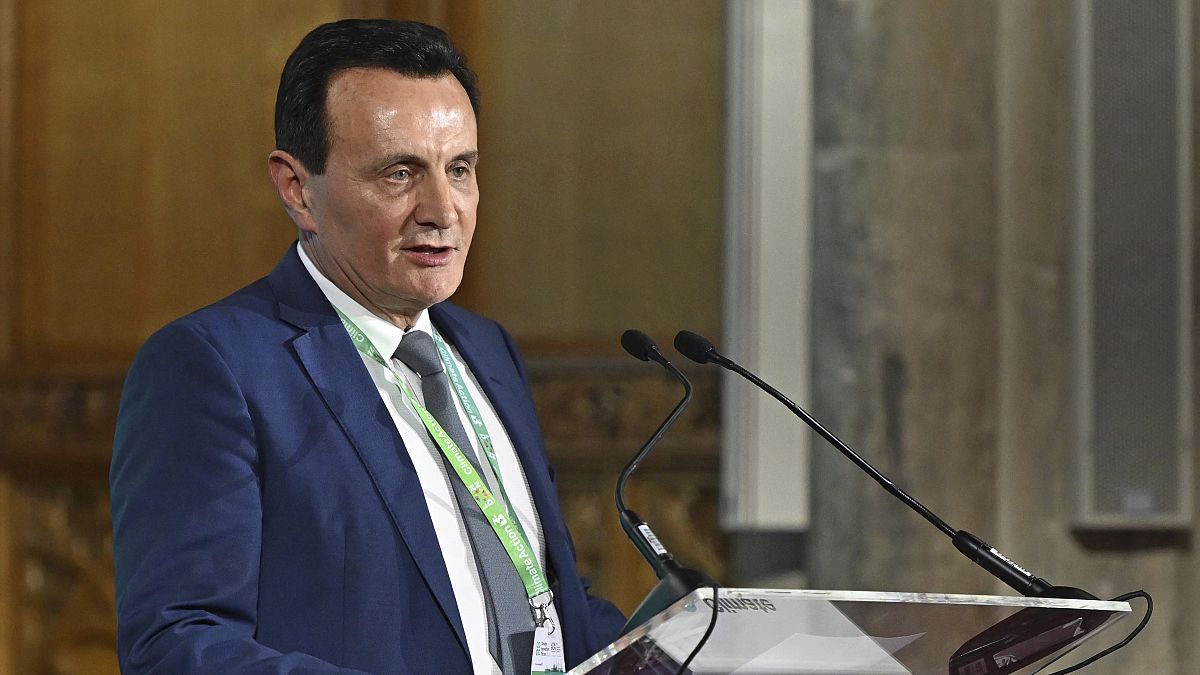Pascal Soriot headed a list of top earners compiled by the High Pay Centre, with bosses of Rolls Royce and HSBC also included in the top 10.
The CEOs of Britain’s biggest firms received record levels of compensation last year, according to the High Pay Centre, the think tank that compiled the figures.
Median pay for the boss of a FTSE 100 firm rose to £4.19m (€4.90m), a 2.2% annual jump.
The mean figure, which takes into account very high and low values, rose from £4.44m to £4.98m – a 12.2% increase (€5.19m to €5.82m).
Topping the compensation list was French-born Australian Pascal Soriot, who earned £16.85mn (€19.69mn) as the CEO of pharmaceutical giant AstraZeneca.
The second highest-paid CEO was RELX’s Erik Engstrom, on £13.64m (€15.94m) a year, followed by Rolls Royce’s Tufan Erginbilgic, on £13.61m (€15.90m).
Select few see bumper rises
The increase in average pay for CEOs was mainly influenced by a small group of companies who significantly raised rewards, rather than large increases from a range of companies, according to the High Pay Centre.
That explains the large gap between the median and mean pay figures.
Of the 54 companies which paid their CEO more in 2023, the three largest percentage increases were at Rolls-Royce (an increase of 255%), Reckitt (192%) and Haleon (151%).
“While it’s much too early to describe this as a trend, it is interesting that a small number of large companies made very large CEO pay awards this year, given the recent debate about executive pay,” said the High Pay Centre.
In order to recruit and retain world-class talent, a number of high profile voices have been arguing that UK firms need to raise CEO pay.
On the other hand, the Centre for Pay notes that “the number of UK-headquartered companies that could be considered globally significant is low”.
Barely a third of FTSE 100 companies would be large enough to qualify for the US’ S&P 500 index.
Some argue that pay levels should therefore reflect this disparity.
According to data released by US labour union federation AFL-CIO earlier this month, S&P 500 CEOs made $16.7mn (€15.30mn) on average in 2022.
Inequality across workforces
The Centre for High Pay outlined practical issues surrounding very high rewards for CEOs, notably that: “Excessive spending on top earners … makes it harder to fund pay increases for the wider UK workforce.”
The median FTSE 100 CEO pay of £4.19m (€4.90m) is 120 times the median earnings of a UK full-time worker in 2023.
Pascal Soriot’s salary, meanwhile, is 482 times the pay of the median UK full-time worker.
In order to manage these disparities, the Centre for High Pay has published a list of recommendations for the UK government.
One suggestion is to improve pay transparency, ensuring that private and public companies publish the salaries of their highest earners.
The think tank also noted that workers should have easily accessible information about their relative position on pay, meaning that they know how their salary relates to the earnings of colleagues performing similar roles.








